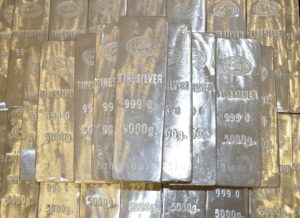
5th February 2021
You’re everywhere and nowhere, baby
That’s where you’re at
Hawksmoor Fund Managers’ investment process starts with the premise that we have no idea what equity or bond market, or which economy, will perform best over the next few years. We are often asked for our views on important macroeconomic variables like inflation and interest rates and all we can do is shrug and admit that there are others whose opinion may be worth more.
Instead, we concentrate our efforts on what we see as our core competency: identifying cheap assets and constructing diversified portfolios for our three Funds: Vanbrugh, Distribution and Global Opportunities. This diversification leads us to have a good portion of our portfolios’ assets outside of sterling, in other currencies.
Recently we have become particularly vexed about monetary authorities in all the major economies repeatedly and forcefully debasing their currencies via money printing. This has led us to ensure we have good weighting to precious metals, particularly gold, on the basis that they are a form of money (or store of value) that cannot be debased. Our conviction in this area has been reinforced by the cheapness of the equities of mining companies that extract gold from the ground.
We have documented our liking for gold and gold equities extensively, but we have not talked much about silver. This has been remiss of us, since one of the highest conviction holdings across all three of our Funds is Merian Gold & Silver, run by Ned Naylor-Leyland. 42% of this portfolio is invested in silver mining equities and another 9% in silver bullion. Given the extraordinary events of the past week in the silver market, this element of Ned’s portfolio (and thus of our own Funds) deserves attention.
Silver is interesting. It is seen as one of the world’s oldest forms of money, and it has extensive industrial uses too (meaning it is consumed). Around 50% of demand for silver in any one year is for use in applications with ever increasing demand – e.g. solar panels. It is about 17 times more present in the earth’s crust than gold, a ratio that many “silver bugs” believe should be reflected in the prices of each metal. Yet today, the ratio of the price of 1 ounce of gold to 1 ounce of silver is closer to 68:1. Given the growing demand for silver for such green technology, there is good reason for this ratio to fall – and it is well known that supply of silver from miners cannot keep up with incremental demand growth.
But this week, another feature of the silver market came into focus. After many retail (and non-retail (!)) investors caused the share prices of certain doomed US companies (most notably GameStop and AMC Entertainment) to soar to levels entirely unrelated to the fundamental performance of those companies, attention turned to silver. The media wrongly portrayed this as a similar phenomenon: a so-called “short-squeeze”, in which large numbers of smaller investors ganged up on hedge funds in the knowledge that those funds had “short-sold” those shares. In the case of silver, the “attack” was on the so-called “bullion banks” who have for years allegedly manipulated the futures market.
Futures markets are often a great deal bigger than the thing they are a derivative of. In the case of silver, there are futures contracts entitling delivery to an amount of silver approximately 250 times that which is extant. Liquid futures markets are generally seen to be a good thing as they enable efficient hedging of risk that supposedly lowers costs across the financial system. But in the case of silver, the attack last week highlighted their nonsensical nature. In the mid 19th century, futures were created as a way for farmers to sell their produce for cash today, for delivery at a later date. Does it make sense for there to be futures contracts over commodities, metals or anything else over an amount far in excess of what is available to be delivered? To an extent, yes. At the expiration of a futures contract, delivery does not have to be taken – at the time of expiration, the value of the contract could be settled in cash instead. But what happens when the owner of the futures contract really, really wants to take delivery? This is likely to happen if the owner of the contract wants to own physical silver and can only buy it at a much higher price via bullion dealers.
When people are concerned about the debasement of fiat money (i.e. paper currency), they might want to own physical precious metal as a much better store of wealth. The silver market is relatively small in financial markets terms: with c. 3 billion ounces of silver above ground in vaults, coins, bars and silverware, at $25/ounce, that’s “only” $75bn. So last week a group of enthusiasts decided to highlight the interplay between the futures market and the physical market to the wider world via a social media campaign. Thus began a frenzied period of 3 days of buying physical silver from local coin and bullion dealers. The buying was so frenzied that globally many major dealers actually ran out of silver. The price of silver rocketed. It rocketed in the futures market, but it rocketed far more in the physical market. Thus we now have a situation today where the futures price supposedly allows someone to buy an ounce of silver for c. $26.10 and take delivery in just a few weeks, and yet the physical dealers are selling it for roughly 50% above this price. The attack was meant to expose the “lie” that silver futures have always hidden in plain sight: how can the bullion banks selling the futures contracts possibly be able to deliver physical silver when the futures market itself promises 250x the available silver?
The banks that make markets in silver and gold futures have been fined in the past for using their might to manipulate the “paper” (“futures”) silver market. The fact is, the paper silver market can dislocate from the physical market by quite a degree. It did so in March 2020 for example. The situation was resolved by a spike in the price of futures. This time, the amount of physical silver being bought is far higher, and thus the potential for the next expiring futures contracts to be embarrassed is far higher. And yet, as I write, the silver futures contract is seemingly under attack and being pushed below the levels seen before the original attacks began last week. Manipulation? What will happen if the physical price of silver remains high at the expiration of the February contract and many want to take deliver? Will cash settlement be forced on the owners of the contract? Will the banks that have over-promised need to be bailed out? Will there be wholesale reform of the commodities and futures markets? We have no idea – but we can clearly identify these issues and we want our investors to profit from it. Just as Jeff Beck sang… silver is apparently everywhere and yet nowhere…
We think the events of last week show there are clear and understandable concerns about the value of paper currencies. This manifests itself in increased demand for physical precious metals. That the futures markets are so volatile is a source of frustration for us. But we are far more concerned about whether the underlying case for precious metals has changed. It hasn’t. The case for owning silver is only growing. The high price of physical silver illustrates this, and the large premium to the futures price has to be resolved eventually. In the meantime, industrial demand for silver grows, and silver mining equities are cheap – a big tick in the box of our investment process that seeks out cheap assets with a margin of safety.
While a high conviction position, we have position-sized our exposure to Merian Gold & Silver accordingly: on strong up-days for the fund, our investors will note the gentle outperformance of our Funds versus competitors; on down-days, the position won’t cause us too much pain. Please do not think of us as gold or silver bugs – or unthinking enthusiasts for shiny objects! We are valuation-bugs, and that is why we like precious metals and their mining equities so much.
It has been a quiet week for dealing on the Funds. We did take advantage of the hyper-volatility in silver to trim our exposure to Merian Gold and Silver. Elsewhere we continue to take advantage of some generous discounts in some UK smaller companies investment trusts. We were also particularly pleased with an update from the managers of Phoenix Spree Deutschland – a large holding we mentioned last week. It is great to be so enthusiastic about a large holding with such a huge margin of safety. Especially when we see craziness all around us. Yesterday we saw yet another example of the madness that occurs on a daily basis. A one-word tweet from Elon Musk added c. $3bn of value in 3 minutes to a cryptocurrency named after a dog, and popularised by a cute picture of a perplexed-looking Shiba Inu. Google it. I’m not making it up.
Ben Conway – Head of Fund Management

This financial promotion is issued by Hawksmoor Fund Managers which is a trading name of Hawksmoor Investment Management (“Hawksmoor”). Hawksmoor is authorised and regulated by the Financial Conduct Authority. Hawksmoor’s registered office is 2nd Floor Stratus House, Emperor Way, Exeter Business Park, Exeter, Devon EX1 3QS. Company Number: 6307442. This document does not constitute an offer or invitation to any person, nor should its content be interpreted as investment or tax advice for which you should consult your financial adviser and/or accountant. The information and opinions it contains have been compiled or arrived at from sources believed to be reliable at the time and are given in good faith, but no representation is made as to their accuracy, completeness or correctness. Any opinion expressed in this document, whether in general or both on the performance of individual securities and in a wider economic context, represents the views of Hawksmoor at the time of preparation and may be subject to change. Past performance is not a guide to future performance. The value of an investment and any income from it can fall as well as rise as a result of market and currency fluctuations. You may not get back the amount you originally invested. HA4230.
